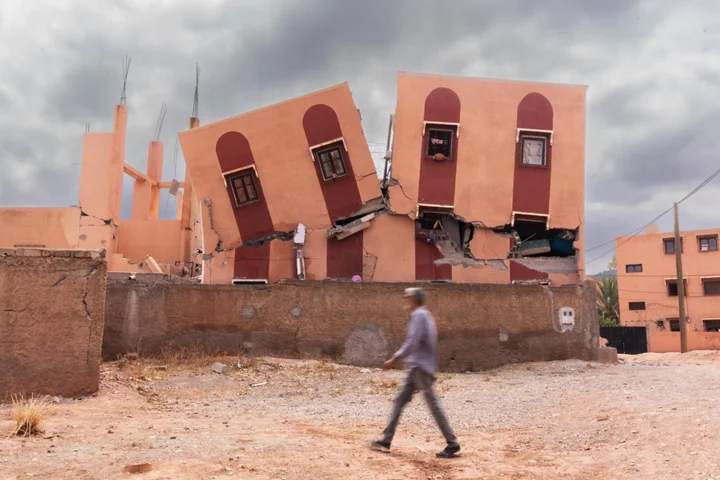Morocco said at least 2,901 people have been killed in the nation’s most powerful earthquake in a century, as last-ditch efforts continue to find survivors nearly four days on.
Foreign and Moroccan teams on Tuesday kept up their search of remote areas around the High Atlas mountains, the epicenter of the Sept. 8 temblor. It struck shortly before a devastating storm lashed the shores of nearby Libya, where dams collapsed and triggered floods that killed at least 2,300, almost all in one city.
The disaster in Morocco also damaged parts of Marrakech, one of the country’s top tourist destinations. The Interior Ministry said in a statement that 5,530 people had been injured. King Mohammed VI will soon visit affected areas, Al-Arabiya reported, citing people it didn’t identify.
“Time is quickly running out,” said Borja Gonzale de Escalada of the Washington-based Project Hope, an aid group that has deployed rescue dogs in the quake zone.
The kingdom’s deadliest quake since 1960 dealt a damaging blow to a country that paints itself as an island of stability in North Africa. Survivors in devastated villages in the High Atlas have been venting increasing anger over the perceived slowness of domestic rescue efforts and aid supplies. Morocco has officially accepted only a handful from the dozens of international offers of support.
The government on Monday made some of its first pledges for the recovery, including financial assistance for reconstructing homes. At least 30,000 houses, 500 schools, hospitals, roads and other infrastructure all need rebuilt, Prime Minister Aziz Akhannouch said in remarks carried by local media, including Hespress.com and Le360.
Authorities will unveil fuller details as early as this week, Akhannouch said, citing instructions from the king, who’s ruled since 1999. Temporary housing will also be established for those in need, he said.
Reconstruction may cost from 30 billion dirhams ($3 billion) to 50 billion dirhams, according to Abdelouahed El Jai, a former central bank director and professor at the National Institute of Statistics and Applied Economics in Rabat, the capital.
The quake creates “a new crisis” for an economy that was starting to recover from the dual shockwaves of Russia’s invasion of Ukraine and the effects of the Covid pandemic on tourism, El Jai said in an interview.
The rebuilding of the Atlantic coastal town of Agadir, where an earthquake six decades ago claimed about 12,000 lives, may have been “a walk in the park compared to what were are dealing with today,” El Jai said, referring to the size and poor accessibility of the area affected by Friday’s quake.
Without significant donations from Gulf Arab and Western allies to cover the expenditure, Morocco may need new borrowing that would increase its budget deficit, he added.
There were fresh aid pledges on Tuesday, with the Red Cross launching an appeal to raise 100 million euros ($107 million). The philanthropic arm of Binance announced it will airdrop as much as $3 million in BNB coins to its users “identified as living in the areas affected by the tragedy.”
The United Nations Children’s Fund estimated a third of the 300,000 made homeless are children, with no access to schools and hospitals.
“There are a lot of orphaned kids,” said Adeline Hazan, who heads UNICEF France. “There is also a lot of displaced children who don’t know what happened to their parents,” she added in remarks to FranceInfo.
Many families have lost everything, said Project Hope’s de Escalada. “People are displaced and living on the streets. Access to medical care is scarce, pushing people to embark on a three-hour journey to Marrakesh for treatment.”
The carnage has extended to Morocco’s rich cultural heritage. Marrakech’s Unesco-listed center was hit, while local media reported that major historic sights elsewhere in the quake zone, including the 12th-century Tinmel mosque, Saadi tombs and Badii Palace, also sustained serious damage.

